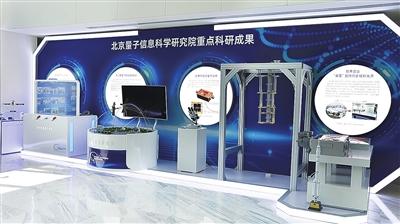How to resist aging?Is it useful for stem cell therapy?
Author:China Popular Science Expo Time:2022.09.06
We are no stranger to the word "aging", but people often interpret the aging one -sided as: the white hair brought by the years, the relaxed skin, the old face, and ignore the overall changes of the body.
Therefore, many people consider anti -aging as the maintenance of the appearance, so water -light needles, hyaluronic acid, collagen and other products have become the choice of keeping young. Although medical beauty can delay the aging of the face, it cannot improve the physical symptoms of aging. Even the beauty of the beauty can not reverse the essence of energy loss, poor memory, weakened resistance, and the decline of internal organs.
In order to resist aging, people have tried a variety of methods. Today, stem cell anti -aging has also received everyone's attention. But can stem cells really fight aging?
Before discussing this issue, we should first discuss what "aging" refers to.
What is aging?
First of all, we must make it clear that aging is not just to go to the old age. Specifically, aging can be divided into cell aging and body aging.
Looking at the aging of cells first, it already has a relatively clear criterion. The typical characteristics of aging cells are the termination of cell transmission under stress conditions. Direct related stress conditions include chemotherapy, metabolic waste accumulation and telometer wear.
The environment and genetic factors of our lives will affect many key cell processes and ways of the body, causing stem cell depletion, gene instability, telometer wear, apparent changes, protein loss, etc. 1). Long -term accumulation of aging cells can form chronic inflammation and become a risk factor for a variety of chronic diseases.

Figure 1 The logo of aging (picture source: reference [1])
The aging of the body is the process of gradually losing the function of the organ tissue and organ, and it is also the most important factor in the decline of the deterioration of chronic diseases, the deterioration of the overall health status, and the gradual decline in cognitive ability.
Common body aging is often accompanied by elderly diseases, such as neurodegenerative diseases, cardiovascular diseases, or exercise system diseases. It is usually difficult to treat and improve the disease process due to the fragile physical fitness of the elderly.
The application of stem cell therapy in anti -aging
Stem cells are not new things that have only appeared recently. As early as the 1960s, scientists opened a precedent for studying stem cells. This is a class of cells with high self -renewal ability and multi -directional differentiation. Seed cells can be differentiated into multiple functional cells and tissue organs under appropriate conditions in vitro.
During the process of life, the function and number of stem cells and quantity changes (Figure 2). Survival and reproduction are critical to species, so the characteristics of stem cells in these two stages are affected by natural selection.

Figure 2 Dynamic change model of stem cells during the life cycle (picture source: reference [2])
The life cycle of stem cells can be roughly divided into three stages. During the occurrence of embryos and organ growth, the stem cells are highly active, which helps the formation and growth of tissue; during the peak of reproductive, the growth of the stem cells is to maintain and repair the tissue; after the reproductive maturity period, the reproductive power decreases, and it enters the entering. In the period of "protecting aging", cells and tissue functions are rarely suffered by evolution. It is at this stage that stem cell function (not necessarily the number of stem cells) in most tissues will decline sharply.
Small stem cells can be said to have a great role. It can repair the damage of cells, supplement the consumption of cells, activate the energy of the cells, and play a decisive role in the state of the cell's state and destiny. At present, more than 14 diseases and injuries have entered clinical trials (Figure 3).

Figure 3: Clinical trials of PSC cell therapy (picture source: reference [3])
Of course, returning to our theme of anti -aging. At present, the results of stem cells to treat aging and aging -related diseases are also very rich, such as:
(1) Bone medullary mesenchymal stem cell transplantation is used to improve the symptoms of aging weakness
Symptoms of elderly weaknesses include slow pace, limited ability consumption, and physical exhaustion. Bone marrow germinated stem cells conducted by the University of Miami to treat weak syndrome for elderly people, and Phase I and Phase II tests have been conducted among human subjects.
It is exciting that there are multiple organ improvement effects in this clinical trial. For example, all patients in the treatment group increased the 6 -minute walking distance and the inflammatory cytokines at 6 months at 3 months and 6 months. The level of tumor necrosis (TNF-α) decreases, and the cognitive level has been improved.
At the same time, the study pointed out that as far as the safety of the germinated stem cells in the bone marrow, there were no serious adverse events that did not treat sudden emergencies within one month after infusion.
However, although experiments have succeeded in improving the function of improving elderly weak patients, people are still questioning the experimental participants with fewer participants and more results to prove their role in elderly patients.
(2) Improve neurodegenerative diseases
In the process of aging, almost all brain will have characteristic changes, including losses of brain atrophy, neurons and synapses. These changes related to age lead to a decrease in neuronal activity related to neuroteric degeneration and synapses.
Intravenous infusion of bone marrow germination stem cells can pass through the blood -brain barrier, which is a necessary prerequisite for obtaining appropriate efficacy. The internal and in vitro experiments of various studies record the impact of transplanted bone marrow germinated stem cells. These studies have shown that osteomycapped stem cells can promote the occurrence of nerves and improve the nervous state. Figure 4 The nerve protection of the osteoma mesenchymal stem cells on the aging brain (picture source: reference [4])

Bone marrow vein injection can be used to secrete various neurotic nutrition factors, such as nerve growth factor (NGF), vascular endothelial growth factor (VEGF), and fibroblast growth factor 2 (FGF2). Neuron -like cells.
These secretions are released from non -genetically modified bone marrow germination stem cells, which plays an important role in inducing neurotoly differentiation and increased survival rates.
(3) Improve age -related macular degeneration
Age -related macular degeneration, also known as the degeneration of senile macular, is a pathological aging change in the structure of the macular region. It is an irreversible disease that threatens the vision of the elderly.
Patients often have symptoms such as fixing black shadows and deformation of the vision, and the atrophic "dry" age correlation with macular degeneration of macular degeneration and pigmentation of pigmentation and performed retinal nerve cell dysfunction is characterized. There is currently no treatment method.
In 2018, the Peter J Coffey team of the University of Southern California developed a retinal implantation and supporting surgery technology derived from embryonic stem cells to help macular transformation patients restore vision (Figure 5).
Figure 5 The structure and functional results of the cell patch before and after the operation of the case. (Picture source: reference [5])

Researchers use the letters to evaluate the "best correction vision" after the operation. Within 12 months, the correction vision of patients 1 and 2 has been increased from 10 letters to 39 letters, and from 8 letters to 29 to 29 A letter.
Micro -field examination is a perception test with micro -local light stimulation showing that the visual sensitivity areas of the two patients increase. The reading speed of patients 1 and patient 2 increased from 1.7 to 82.8 and from 0 to 47.8 words/minute.
The possible mechanism and challenge of stem cell therapy delaying aging
Stem cells have powerful functions. Although the key regulatory factors of stem cells improve aging are not completely determined, it can be used as a expected treatment method against age -related diseases and body aging.
A large number of scientific experiments and clinical practice have proved that stem cells can achieve regeneration and repair of damaged and aging cells through multiple mechanisms.
For example, osteomycapped stem cells can produce differential cells, promote tissue regeneration, and improve tissue functions. It can also give full play to the immune regulation function, reduce inflammation by inhibiting the proliferation of immune cells, and help tissue repair. In addition, stem cells can also improve the micro -environment of tissue by secretion and promote tissue regeneration by secreting soluble molecules (Figure 6).
Figure 6 The clinical application and action mechanism of HUC-MSCS (picture source: reference [6])

You can see that various evidence shows that stem cells have hope to play in the field of anti -aging, but we cannot be blind and optimistic, because the safety of stem cell therapy has always been questioned. For example, the extension of the long -term bone marrow germinated stem cells can cause chromosomal abnormalities and may induce tumors in the body.
However, it is believed that with the maturity of stem cell technology and the continuous deepening of research, the application of stem cells in aging and the treatment of elderly diseases in the future will gradually move towards the clinic.
Produced: Popular Science China
Author: Liu Boan
Producer: China Science Popularization Expo
Edit: Wang Tingting
references:
[1] From Discoveries in Ageing Research to therapeutics for Healthy Ageing
[2] STEM Cells and Healthy Aging. Science, 2015
[3] Pluripotent S
[4] Application of Mesenchymal STEM Cell Therapy for Aging Frailty: From Mechanisms to therapeutics
[5] PHASE 1 Clinical Study of An Embryonic STEM CELL – CERIVED RETINAL PIGMENT EPITHELIM PATCH in Age-Related Macular Degeneration
[6] What is the IMPACT of Human Umbilical Cord Mesenchymal Stem Cell Transplantation on Clinical Treatment?

- END -
The construction of Haidian "two districts" hand over a new "transcript"

Li Hongya/PhotoOn September 9, the press conference of the two districts construct...
Offline today!The first air rail train is here

Today (August 26)The first column of Optical Valley Lights air rail trainsSuccessf...